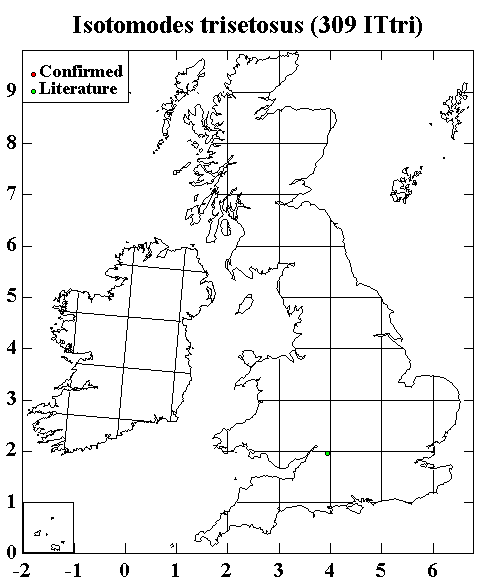|
Isotomodes trisetosus is represented by three specimens in the NHML slide collection found by Harold Gough in Tarlton, Gloucestershire in February 1970. Unfortunately, they are very badly degraded and are impossible to identify. Isotomodes trisetosus reaches a maximum length of 0.9 mm, is white in colour, has an oval post-antennal organ (PAO) and is eyeless. A strong characteristic (shared with Isotomodes productus) is the presence of two prominent setae on the dorsal side of the fifth abdominal segment (which are absent in Isotomodes bisetosus and Isotomodes templetoni). The furca is about the same length as the head and the mucro has two teeth. The ventral side of each dens has a six setae (cf. one seta on the ventral side of the dens of Isotomodes productus).
Back to main page
|
|

